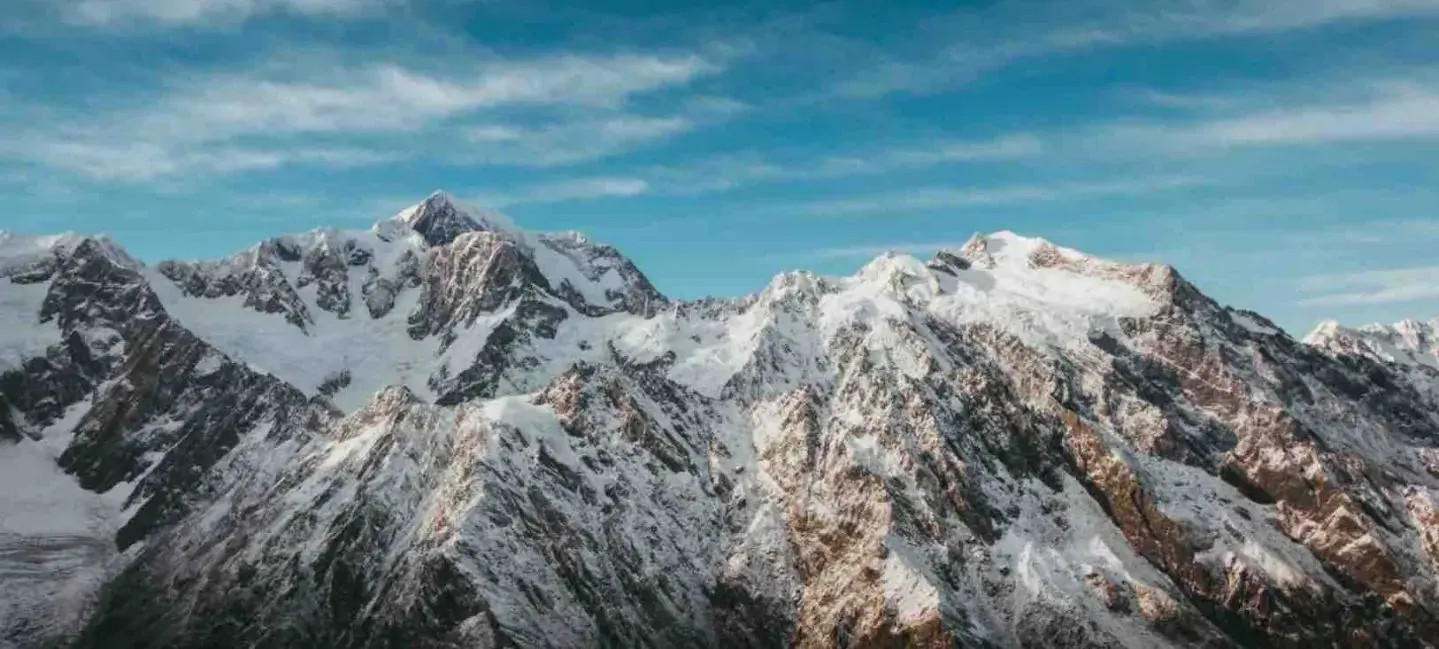Mount Everest, the towering giant of our world, holds an undeniable allure. For many, the dream of conquering its peak, even just witnessing its majesty up close, is a lifelong aspiration. Whether through the arduous trek to base camp or the swift flight by helicopter, Everest beckons.
Advancements in technology have made our world increasingly accessible, and Everest is no exception. The summit, once a realm reserved for elite mountaineers, now seems within closer reach. Intriguingly, a helicopter tour to Everest Base Camp is not only a faster alternative to trekking but can also be more economical. Himalayan Masters offers such tours for around $1500 per person, comparable to the cost of a traditional trek, including landings at key locations like Lukla, Everest Base Camp/Kala Patthar, and the Everest View Hotel.
But this begs a more fundamental question: can a helicopter actually fly to the top of Mount Everest? Historical precedent suggests it’s technically possible. Didier Delsalle’s groundbreaking flight in 2005 to the Everest summit stands as a world record and a testament to this possibility. However, such flights remain exceptionally rare.
Typically, helicopter tours in the Everest region focus on Everest Base Camp and Kala Patthar. Even rescue helicopters, vital for Everest expeditions, generally operate up to Camp I, around 6250m. Delsalle’s summit flight utilized a Eurocopter AS350 Squirrel helicopter, a specialized machine for high altitudes. Flights beyond base camp to the summit are uncommon, and landing a helicopter directly on Everest’s peak is considered virtually impossible for routine operations.
Considering that average helicopters typically fly at altitudes around 3000 meters, and the Everest summit soars to 8848.86 meters, reaching the peak means flying nearly three times the conventional altitude limit. This dramatic altitude difference highlights the immense challenges involved in helicopter flights to the Everest summit.
A breathtaking vista of mountains unfolds during an Everest Base Camp helicopter tour, showcasing the stunning Himalayan range.
 Mountains seen during the Everest Base Camp helicopter tour
Mountains seen during the Everest Base Camp helicopter tour
Unpacking the Challenges: Why Summit Helicopter Flights Are Rare
Several critical factors contribute to the complexities and limitations of flying helicopters to the Everest summit. A primary reason is regulatory: the Nepalese government restricts commercial flights to the summit, primarily allowing only rescue missions. This regulation aims to preserve the traditional mountaineering significance of Everest and prevent frequent flights from potentially impacting the mountain’s environment and the spirit of climbing.
Beyond regulations, significant physical and operational challenges exist:
The Thin Air: Low Air Pressure and Oxygen Levels
As altitude increases, air pressure and density decrease dramatically. This means that with each meter gained in elevation, the air becomes thinner, and the available oxygen level drops. This reduced air density poses a significant challenge for helicopters because the rotor blades need air to generate lift. At Everest’s summit altitude, the air is so thin that standard helicopter rotors struggle to achieve sufficient lift. Only helicopters specifically engineered for high-altitude performance can operate in such conditions.
Adding to the challenge, the oxygen level at the Everest summit is approximately one-third of that at sea level. This scarcity of oxygen is not just a concern for human occupants but also impacts the efficiency of helicopter engines, which require oxygen for combustion.
Unpredictable Weather: A Constant Threat
Mountain weather, particularly in the Everest region, is notoriously unpredictable and can change rapidly.
Imagine planning a flight, only to have visibility plummet due to sudden snowfall or cloud cover. Weather forecasts in such extreme environments are inherently less reliable, and conditions can shift dramatically within short periods.
Throughout much of the year, the Everest region experiences freezing temperatures, snowstorms, and the risk of avalanches. Despite the lower air pressure, strong winds are common, often reaching speeds of 75 mph (120 kph). Such winds pose an extreme hazard to helicopters, potentially leading to crashes, especially in the complex terrain around the summit.
Treacherous Terrain: No Room to Land
The mountainous terrain itself presents a major obstacle. While flying near Everest is feasible, the summit’s steep, icy peak offers virtually no flat, stable ground for landing. Helicopters typically require a relatively flat area of at least 10 meters in diameter for safe landing and takeoff. Such a space simply doesn’t exist at the Everest summit.
Specialized Helicopters and Expert Pilots: A Must
Standard helicopters are simply not capable of reaching the Everest summit. Flights to such extreme altitudes demand specialized, lightweight helicopters designed to operate in low air pressure and extreme temperatures. These aircraft must possess powerful engines and modified rotor systems to generate sufficient lift in thin air.
Furthermore, piloting a helicopter to the Everest summit requires an exceptionally skilled and experienced pilot. Such pilots must have extensive experience in high-altitude flying and mountain operations, capable of handling the unpredictable conditions and navigating the treacherous terrain. Even with specialized helicopters and expert pilots, a safe landing at the summit remains far from guaranteed.
Exploring Landing Options: Everest Region Helicopter Flights
While landing at the Everest summit remains highly risky and generally prohibited, helicopter flights within the Everest region are common and offer incredible experiences. With special permits, flights can reach altitudes up to 7000 meters. Helicopter tours to Everest Base Camp (Kala Patthar) are readily available and relatively affordable in Nepal.
Numerous villages along the Everest trekking routes have designated helipads, allowing for landings at locations like Lukla Airport and Namche Bazaar. These landings are often part of acclimatization itineraries or provide access points for treks.
Himalayan Masters’ Everest Base Camp helicopter tour, for example, includes landings at Lukla, Pheriche, Hotel Everest View, and Kala Patthar. It’s important to stay updated on Nepalese government regulations, as flight restrictions in the Everest region can sometimes be imposed. Customizing landing locations and durations is often possible, potentially incurring additional costs.
For trekkers reaching Everest Base Camp who prefer a quicker return, helicopter flights back to Kathmandu are available from Gorakshep (5140m/16863.5 ft).
Kala Patthar: The Highest Accessible Landing Point
The highest authorized landing point for commercial helicopter flights (outside of emergencies) is near Kala Patthar, at approximately 5,550 meters (18,209 ft). This location is renowned as the premier viewpoint for Mount Everest, offering breathtaking panoramic views of Everest and the surrounding Himalayan peaks. Visitors can spend time here soaking in the awe-inspiring scenery.
Everest Base Camp itself, at 5,364 meters (17,598.5 ft), is another popular landing destination. A helicopter flight allows direct access to EBC, bypassing the multi-day trek, with typical visits lasting around 30 minutes to mitigate altitude sickness risks.
Everest Camps: Landing Zones for Rescue Missions
Beyond Everest Base Camp, helicopter landings are primarily reserved for rescue operations. These specialized flights are equipped to operate at extreme altitudes and require specific permits to fly within the higher Everest region.
Everest Camp I Landing: Situated at 6,065 m (19,900 ft), Camp I offers limited landing space, making it accessible only to rescue helicopters in emergency situations.
Everest Camp II Landing: Camp II, at 6400m (20,997 ft), provides a more substantial and relatively easier landing area compared to Camp I, making it the most accessible of the higher camps for helicopter operations.
Everest Camp III Landing: Reaching 7100m (23,293 feet), Camp III marks the highest landing point on Everest. Rescue helicopters often employ ropes for evacuations above this altitude. Camp III offers a clearance area of approximately 100 feet for landings.
Altitude Limits: How High Can Helicopters Fly in the Everest Region?
Standard helicopters typically have a service ceiling of around 3,000 meters, rendering them unsuitable for Everest region tours. However, Nepal utilizes turbine helicopters, known for their powerful engines and high-altitude capabilities, extensively for Everest flights.
These turbine helicopters can readily reach altitudes of up to 7,200 meters. This means that on a typical Everest helicopter tour, passengers can enjoy spectacular views of the Everest summit and a multitude of other majestic Himalayan peaks from a safe and comfortable altitude.
While overflying the summit and attempting a landing remain exceptionally risky and discouraged, landing at Everest Base Camp or Kala Patthar provides an attainable and unforgettable Everest experience. Helicopter tours often incorporate landings at Lukla for refueling and the Everest View Hotel for breakfast, enhancing the overall experience.
The Future of Everest Summit Helicopter Flights: A Distant Prospect?
Considering the current state of helicopter technology, regulations, and the inherent challenges of the Everest environment, regular helicopter flights to the summit appear unlikely in the near future. Creating a viable and safe landing zone anywhere near the summit also presents a formidable obstacle.
While technological advancements and potential regulatory shifts might make summit flights more feasible in the coming decades, perhaps within a decade or two, actually landing a helicopter on the Everest summit is anticipated to remain a significant challenge for the foreseeable future.
Historical High-Altitude Helicopter Flights: Pushing the Limits
While routine Everest summit helicopter flights are not a reality, history records instances of helicopters reaching extraordinary altitudes. In 1972, an Aerospatiale SA 315 Lama set a world record by reaching 12,442 meters. This record was surpassed in 2002 when a Eurocopter AS350 B2 ascended to 12,954 meters. These remarkable achievements, however, were not regular operations but rather rare, record-setting events undertaken with substantial risk.
A helicopter gracefully navigates the skies during a Mount Everest helicopter tour, offering unparalleled views of the Himalayas.
 Helicopter flight to Mount Everest
Helicopter flight to Mount Everest
Helicopter Rescue: A Vital Service in Everest
Helicopter rescue is an indispensable service in the Everest region, crucial for both Everest Base Camp trekkers and mountaineering expeditions. Travel insurance that specifically covers high-altitude emergencies, including helicopter evacuation, is essential. This insurance is typically obtained in your home country, not arranged by local trekking agencies.
Without insurance, the cost of a helicopter rescue in the Mount Everest region can range from $2000 to $4000 or more, depending on factors like location and group size. Helicopter rescue is frequently utilized by trekkers and climbers in the region, particularly those attempting peak climbs like Lobuche and Mera Peak.
Given the inherent risks of high-altitude trekking and mountaineering in rugged terrain, helicopter rescue provides a critical safety net.
Everest Base Camp Helicopter Tours: An Accessible Everest Experience
For those whose Everest dreams center on experiencing the mountain’s grandeur without summiting, Everest Base Camp helicopter tours offer an exceptional alternative. These tours, readily bookable from Kathmandu, complete the round trip in under three hours.
Shared helicopter tours to EBC are a popular and cost-effective option. A typical tour includes a flight from Kathmandu to Lukla, a flight to Everest Base Camp and/or Kala Patthar, a landing at the Everest View Hotel, and the return flight to Kathmandu.
An Everest Base Camp helicopter tour stands out as a comfortable and relatively affordable way to witness the unparalleled beauty of Everest.
Everest Base Camp Heli-Trekking: Combining Trekking and Flight
The Everest Base Camp Heli-Trek offers a unique blend of cultural immersion and aerial mountain views. This itinerary combines trekking in the lower Everest region with a helicopter flight to EBC.
Participants typically fly to Lukla and trek to Namche Bazaar, then hike to the Everest View Hotel and Thame before taking a helicopter flight to Everest Base Camp and Kala Patthar. After experiencing Everest, trekkers can choose to fly back to Kathmandu or extend their helicopter tour to destinations like the Gokyo Lakes.
This Heli-Trek provides a balanced experience, combining the cultural and natural richness of trekking with the speed and unique perspective of a helicopter flight, often within a shorter timeframe and budget than a full trek.
For inquiries about Everest region tours, including helicopter tours and heli-treks, further information can be obtained by contacting Himalayan Masters.
